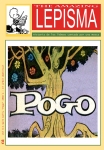In One Stroke, Podcasting Hits Mainstream
EVER since Steven P. Jobs returned to Apple Computer in 1997 after a 12-year absence, his company has thrived by executing the same essential formula over and over: Find an exciting new technology whose complexity and cost keep it out of the average person's life. Streamline it, mainstream it, strip away the geeky options. Take the credit.
So far, Apple has worked this kind of magic on digital video editing, wireless networking, online music selling, R.S.S. feeds (a kind of Web site subscription) and other technologies. Its latest attempt, however, will be music to an awful lot of ears. With its release of the free iTunes 4.9 software for Mac and Windows, Apple has just mainstreamed podcasting.
A podcast, as anyone under 25 can tell you, is an audio recording posted online, much like a short radio show. ("Podcasting" is a pun on "broadcasting," implying, of course, that you listen to it on your iPod or another music player.) The beauty of a podcast is that it's free and you listen to it whenever you like. And there are more than 7,000 podcasts "on the air" right now, on every conceivable topic. Their quantity and variety already dwarf what you can find on regular radio.
What makes podcasting a national dinnertime conversation these days, though, is that anyone can make one. You just need a microphone, a sound-recording program, and the tutorials that have already appeared at many points on the Web, including apple.com/podcasting.
Yes, some are corporate broadcasts, repurposed shows from traditional radio shows. But the real fun is finding the homemade ones, the amateur attempts made in somebody's basement with a laptop and a microphone. These can be unpolished and quirky, with plenty of dead air and "ums," but that's their charm. Podcasts, in other words, are the audio version of blogs - the Web logs, or daily text postings, that made up last year's hot dinnertime conversation.
Until Apple got its mitts on podcasting, the finding, sampling and managing of podcast audio files was time-consuming and scattered. First you had to find a podcast worth listening to, using directories like www.podcast.net or www.podcastalley.com. Then you had to find, download and (in some cases) pay for a podcast-management program like iPodder (for Mac, Windows or Linux).
Three things give iTunes 4.9 enough heft to bring podcasts to the people. First, it manages the complete chain of podcasting command - finding podcasts, subscribing to them and transferring them to your iPod - beautifully and simply. Second, it's free. Third, it already has a vast following; millions of people already use iTunes to manage their music collections and iPods. Adding podcasts to that work flow feels like a natural evolution.
To get to the podcast selection screen, you open iTunes and click the Music Store icon. (Oddly, you don't click the new Podcasts icon. Doing that shows you the list of podcasts you've subscribed to so far, so it's empty the first time you try this experiment.)
Here you can see featured icons for new spoken podcasts, music podcasts, indie podcasts, and so on. There's also a list of podcast categories, a Search box (which works either by show name or by podcaster's name), and a Top 20 Podcasts list.
This is a coveted list to be on. Once you're on the Top 20 list or even the Top 100 list, your popularity benefits from a delicious cycle, because thousands more people will find your show and give it a listen. The Top 20 list usually includes the professional programming from National Public Radio and CNN, technology shows like Leo Laporte's TWIT (This Week in Tech), and, inevitably, the occasional sex-talk show. (Oh, yes - podcasts can be off-color. Hundreds of them bear the label "Explicit" on iTunes, and those are just the episodes that Apple noticed or was made aware of by users.)
Spot No. 1, though, is often occupied by something called iTunes New Music Tuesday, an Apple-produced show whose D.J. introduces and plays the latest pop music. It's a so-called enhanced podcast, a format that displays slideshow-like graphics at relevant points in the audio. These images appear right in iTunes (in the cover-art area) and even on the iPod itself, if it has a color screen. Cheerful geeks have already hijacked this feature to create, for example, podcasts that walk you through various acts of PC surgery, with photos popping up to accompany the spoken instructions.
To sample a podcast on iTunes, you click its name. A new screen appears, listing the last few episodes. A double-click starts playback. If you like what you hear, you can click Get Episode to copy the audio file to your computer, where you can either listen to it or have it transferred automatically to your iPod or iPod Mini. (If you have an iPod Shuffle or another brand of music player, the transfer isn't automatic; you must drag the podcasts onto the player's icon each time.)
And if you really like what you hear, you can click Subscribe. Now your iPod will always be loaded up with the very latest episodes, without any further work on your part. Pleasant touches abound: for example, the iPod remembers where you stopped listening to each podcast so you can pick up again later. And if you keep transferring a certain podcast series to the iPod without ever listening to it, iTunes politely notices and invites you to unsubscribe.
Apple clearly considers podcasting an important new audio format - so important, in fact, that you can't even hide the Podcasts icon in the iTunes music-source list (as you can the Music Store, Radio and Party Shuffle icons). Company executives must be ecstatic that the masses have adopted the term "podcasting" itself, evoking Apple's most popular product name with every utterance. (Makers of rival players, on the other hand, must be gnashing their teeth and every other body part. According to an article in The Seattle Post-Intelligencer, in fact, Microsoft employees are pointedly using the unappetizing term "blogcast," just so they won't have to say or type the word Pod.)
The big question is, why is Apple working so hard to claim the podcast phenomenon as its own? After all, the company doesn't make any money when you listen to or subscribe to a podcast. The Price column in iTunes says Free for every single podcast, and Apple says it has no intention of changing that.
Clearly, the motivation behind Apple's podcasting program is selling more iPods. You can certainly get podcasts onto other music players, but not with the effortless, automated flow of the iTunes-iPod system.
In other words, these free podcasts are just another feather in the iPod's cap. As an editorial at daringfireball.net astutely observed, Apple is flipping the traditional business plan on its head. It's giving away the razor blades, but selling a staggering number of razors.
Not everybody is happy with Apple's podcasting ecosystem, by the way. Geeks have griped that, unlike other podcast programs, iTunes doesn't speed up downloads using high-tech tricks with names like ETags, compression and "last modified" headers. Early podcasters complain about the growing presence of the slick corporate 'casts, claiming that they're ruining the grass-roots, power-to-the-people feeling of the original podcasts.
And, of course, there's the perpetual wheel-squeaking of long-time iPod haters, who feel suffocated by the whole astonishing iPod juggernaut. They can only resent Apple's success in bringing podcasting to the masses with its own stamp all over it.
But all of that is whimpering in the wind. Overnight, iTunes 4.9 has already become the most popular podcast-management software on earth; Apple says that within 48 hours of its release, Pod people had subscribed to more than a million podcasts. Pockets of the populace may not enjoy the transformation of podcasting into a commercial, pop-culture phenomenon, but it's too late now. The people have spoken - or, rather, listened.
Thanks to David Pouge
pogue@nytimes.com
Friday, July 29, 2005
Subscribe to:
Comments (Atom)




























































